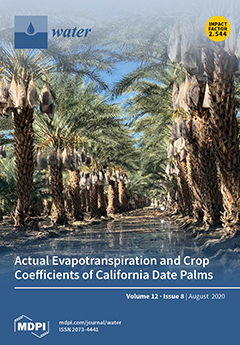Open AccessEditor’s ChoiceArticle
The Potential Use of Geophysical Methods to Identify Cavities, Sinkholes and Pathways for Water Infiltration
by
Yawar Hussain, Rogerio Uagoda, Welitom Borges, José Nunes, Omar Hamza, Cristobal Condori, Khurram Aslam, Jie Dou and Martín Cárdenas-Soto
Cited by 37 | Viewed by 5814
Abstract
The use of geophysical characterization of karst systems can provide an economical and non-invasive alternative for extracting information about cavities, sinkholes, pathways for water infiltration as well as the degree of karstification of underlying carbonate rocks. In the present study, three geophysical techniques,
[...] Read more.
The use of geophysical characterization of karst systems can provide an economical and non-invasive alternative for extracting information about cavities, sinkholes, pathways for water infiltration as well as the degree of karstification of underlying carbonate rocks. In the present study, three geophysical techniques, namely, Ground Penetrating Radar (GPR), Electrical Resistivity Tomography (ERT) and Very Low Frequency Electromagnetic (VLFEM) methods were applied at three different locations in relation to fluvial karst, which is listed as an environmentally sensitive area in Rio Vermelho, Mambaí, Goiás, Brazil. In the data acquisition phase, the GPR, direct-current (DC) resistivity and VLFEM profiles were obtained at the three locations in the area. Data were analyzed using commonly adopted processing workflows. The GPR results showed a well-defined lithology of the site based on the amplitude of the signal and radar typologies. On the other hand, the inverted resistivity cross-sections showed a three-layered stratigraphy, pathways of water infiltration and the weathered structures in carbonate (Bambui group). The interpretation of VLFEM as contours of current density resulted from Fraser and Karous–Hjelt filters, indicated the presence of conductive structures (high apparent current density) that might be linked to the weathered carbonate and other conductive and resistive anomalies associated with the water-filled and dry cavities (cave), respectively. The results encourage the integrated application of geophysical techniques such as the reconnaissance for further detailed characterization of the karst areas.
Full article
(This article belongs to the Section
Hydrology)





